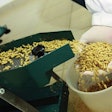
New technology in ingredients and nutritional requirements is widely available.
It is common knowledge that trace mineral nutrition does not receive as much attention by practicing nutritionists compared with other areas of nutrition, such as amino acids. This is because, first, trace minerals demand but a small fraction of the total feed cost and, second, trace minerals are always considered as part of a package – the trace mineral premix. The latter is rather difficult to update, mostly for reasons having to do with feed mill logistics.
As an example, the EU had to ban the use of cobalt in premixes for monogastrics because it was simply not needed, but everyone was using it. That pigs and poultry need no additional cobalt was realized when B12 (cobalamin) was discovered in 1948. So, some things are hard to change. I can attest that some buyers are still asking why premixes no longer contain cobalt.
Today, in most cases, there are inexpensive trace mineral premixes made from ingredients of low bioavailability. It takes a well-educated nutritionist to distinguish the different ingredients based on bioavailability. Most users simply rely on the seller to provide the concentration declared on the label, ignoring bioavailability (and other characteristics, but that is another conversation we need to have).
Some progress has been made with the advent of organic minerals and what I like to call smart minerals that can do the same job only better. Still, it takes a tremendous amount of effort to persuade a feed mill to change/adjust an established trace mineral package. It is only when new products are made/offered that a new composition (levels and ingredients) of trace minerals is accepted and even welcomed.
In my opinion, it is high time we review our trace mineral premixes. It is only six minerals, and they deserve as much attention as amino acids. New technology in minerals (ingredients) and requirements (nutrients) is widely available to have an up-to-date premix.


















